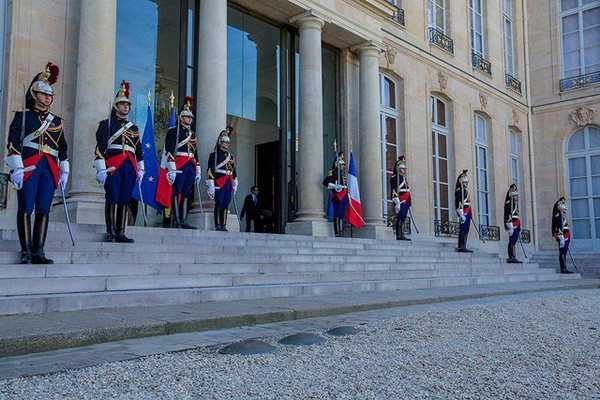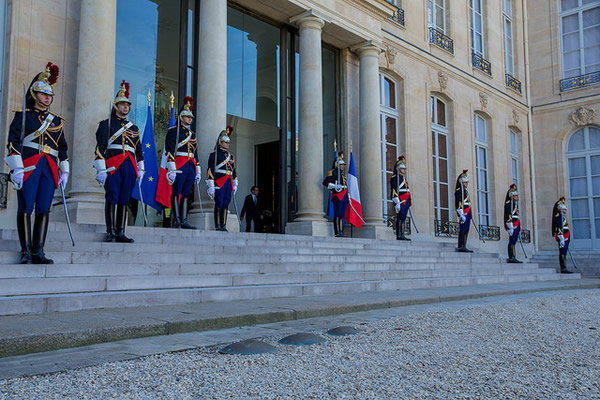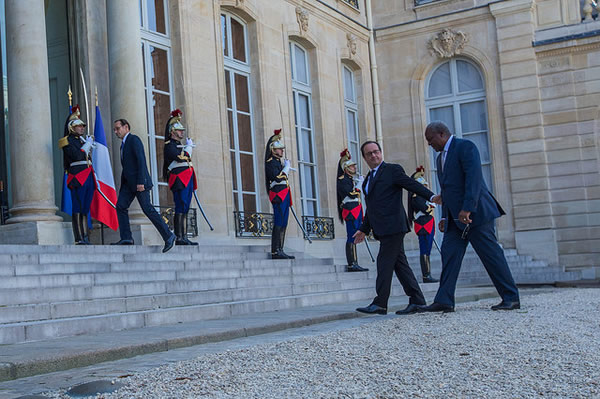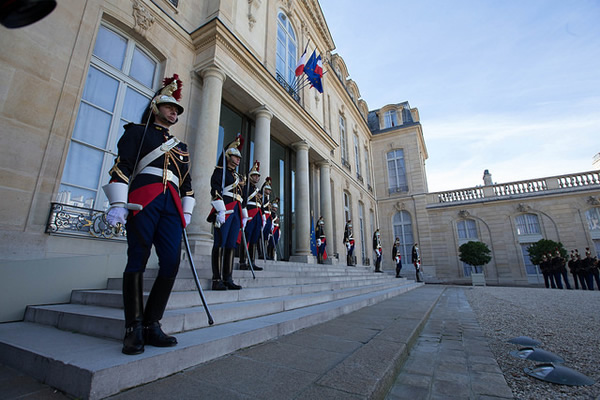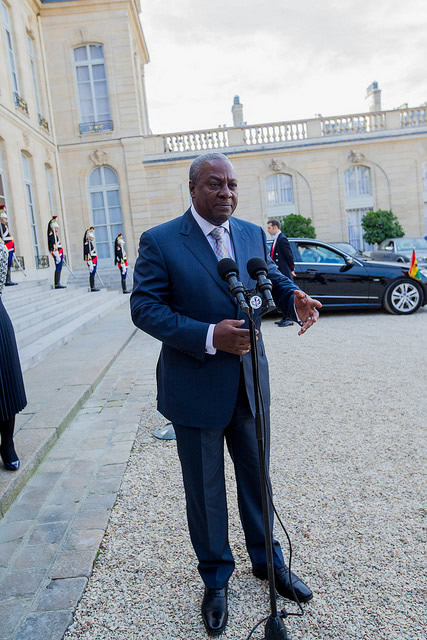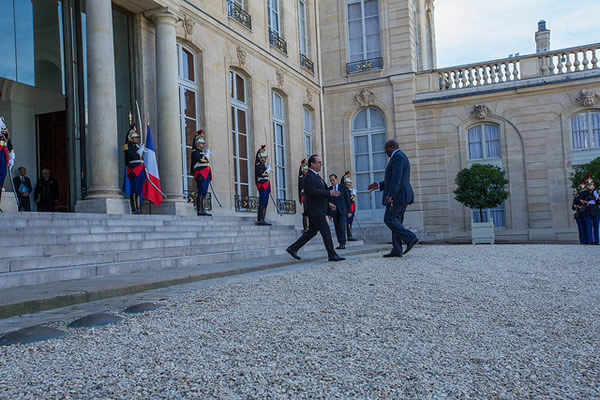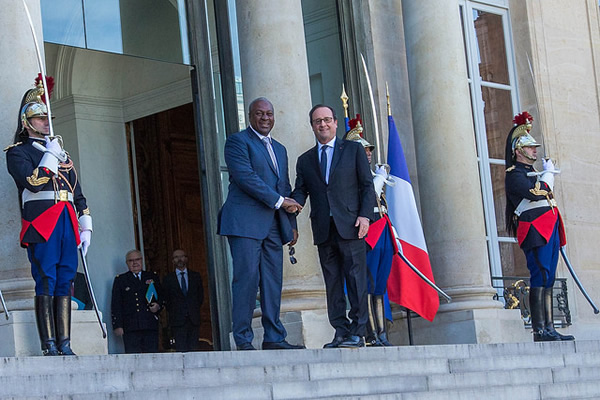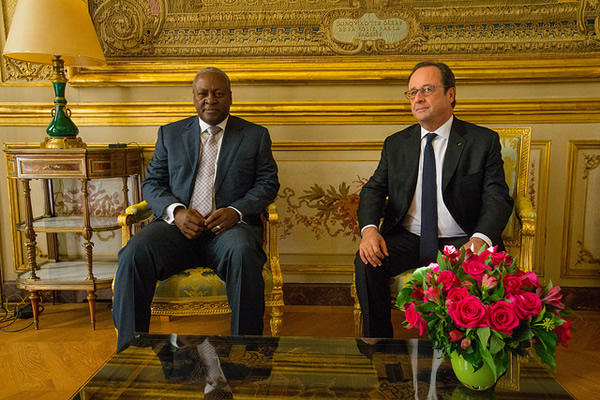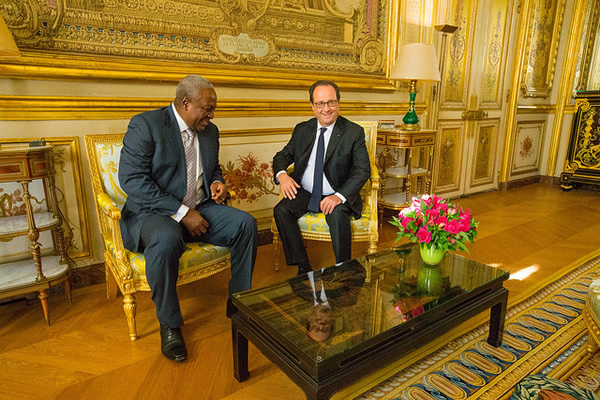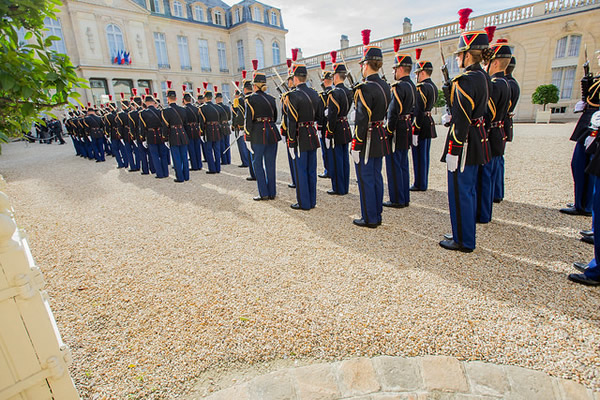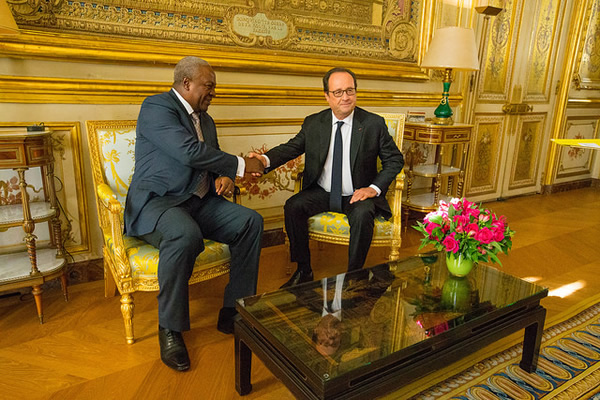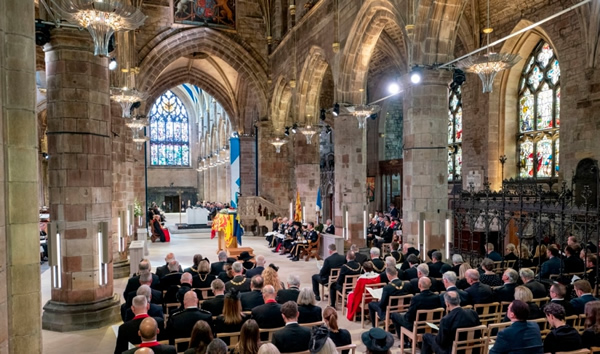
Members of the public paid their respects Tuesday to Britain’s Queen Elizabeth II at St. Giles’ Cathedral in Edinburgh, with many waiting overnight for a final opportunity to file past the queen’s coffin before it is flown to London.
Princess Anne is due to accompany the coffin on the flight back to London later Tuesday.
The queen’s body will be taken to Buckingham Palace first, then transferred in a public procession led by King Charles III to the 11th-century Westminster Hall, where she will lie in state for four days. The hall will be open 23 hours a day for visitors. It will be guarded by soldiers from the royal household.
Tens of thousands of people are expected to travel to Westminster to pay their respects.
A solemn procession
Elizabeth died Thursday at Balmoral Castle in the Scottish Highlands, a place she cherished.
King Charles III, Princess Anne and their siblings Prince Andrew and Prince Edward held a silent vigil Monday in St. Giles’ Cathedral, bowing their heads as they stood at the four sides of their mother’s coffin.
The body was brought to the cathedral in a solemn procession through the streets of Edinburgh, where thousands of people turned out to pay their respects to the late monarch.
After the procession reached St. Giles’ Cathedral, members of the royal family along with political leaders attended a service inside for the queen.
“And so, we gather to bid Scotland’s farewell to our late monarch, whose life of service to the nation and the world we celebrate. And whose love for Scotland was legendary,” the Rev. Calum MacLeod said.
New monarch speaks to Parliament
Earlier Monday, King Charles III spoke to both houses of Parliament in London for the first time as the monarch.
His brief address to approximately 1,000 lawmakers and their guests at London’s Westminster Hall came after the lawmakers offered their condolences on the passing of Queen Elizabeth II during a ceremony filled with pageantry.
Charles said of his mother who served as monarch for 70 years: “She set an example of selfless duty which, with God’s help and your counsels, I resolved faithfully to follow.”
Residents line streets for glimpse, goodbye
The hearse carrying the queen’s body set off on Sunday from Balmoral Castle, the beginning of her long and final journey.
The convoy, which included royal officials and security personnel, tracked slowly through the majestic Scottish hills, a landscape treasured by the late monarch, where she spent her final peaceful weeks of life. In years past, the queen was frequently seen visiting these remote Scottish villages when she resided at Balmoral Castle.
Residents gathered on the roadside to glimpse her for the last time and to say goodbye.
Some onlookers threw flowers as the hearse passed; many in the crowd shed tears. Gentle ripples of applause followed as the convoy continued southward.
“We’ve known (her) for all our lives. So, it’s been the one constant thing in the whole of our lives — the queen,” said Stephanie Cook, a resident of the village of Ballater, close to Balmoral.
After a six-hour journey, the hearse crossed the River Forth toward Edinburgh.
Fiona Moffat traveled from Glasgow to witness the moment. She fought back tears as she described her emotions.
“A very historic moment. I am quite speechless actually,” Moffat said to The Associated Press. “She was a lovely lady. Great mother, grandmother. She did well. I am very proud of her.”
Elaine Robertson, visiting Edinburgh from her home in Ayr on Scotland’s west coast, was also in tears. “I think it is just important to be here. Just important to say goodbye,” Robertson said. “She has been on the throne for a long time. So, yes, it means a lot.”
The funeral is scheduled for September 19 at Westminster Abbey. The coffin will then be taken to Windsor for the committal service, where the queen’s husband, Prince Philip, was laid to rest in April 2021.
Some information in this report came from The Associated Press and Reuters.










